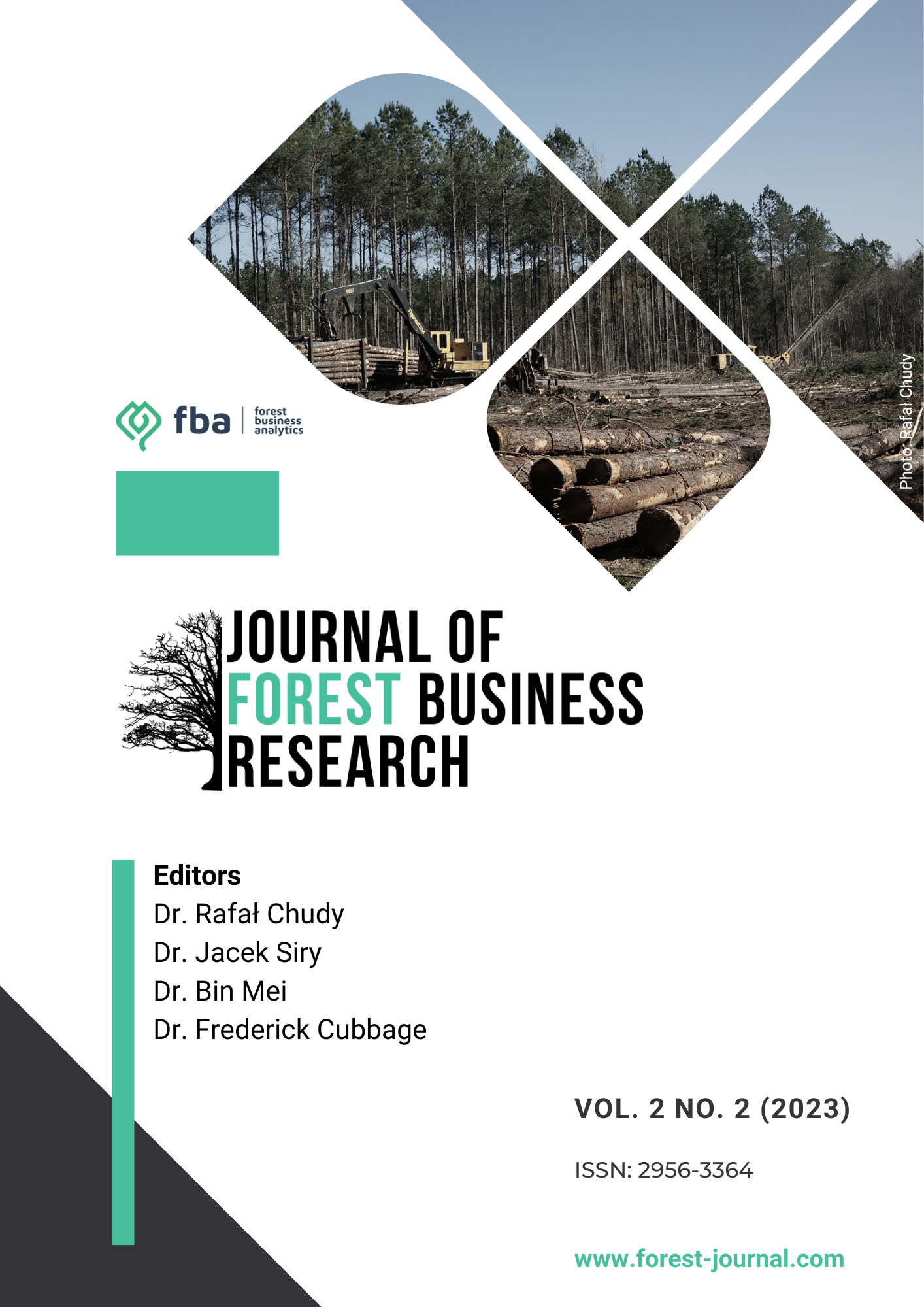Quantifying carbon additionality for uneven-aged forests
Main Article Content
Keywords
climate change, forest carbon, forest management, timberland investment, voluntary carbon market
Abstract
Forests can be managed to sequester atmospheric carbon in addition to producing timber. Forest carbon represents a nature-based solution to climate change and global warming. To internalize the positive externality (social benefit) of forest carbon, additionality must be defined and quantified. In this study, the discounted cash flow approach is applied to an uneven-aged sugar maple forest at a steady state to measure carbon additionality. Carbon credits are generated from the marginal forest growth, while a carbon release penalty is incurred by a harvest. The business-as-usual scenario is defined by a shorter harvest cycle, while an alternative carbon scenario is defined by a longer one. Then, additionality is defined by the difference in the net present value of carbon sequestration on a perpetual basis between the two scenarios. Compared with previous analysis on even-aged southern pine plantations, there is some evidence that the uneven-aged sugar maple forest is less economically effective in carbon offset as indicated by the benefit-cost ratio.
References
Buongiorno J, Zhou M. 2020. Consequences of discount rate selection for financial and ecological expectation and risk in forest management. J.For.Econ. 35(1):1-17. https://doi.org/10.1561/112.00000515
Creedy J, Wurzbacher AD. 2001. The economic value of a forested catchment with timber, water and carbon sequestration benefits. Ecol.Econ. 38(1):71-83. https://doi.org/10.1016/S0921-8009(01)00148-3
Donofrio S, Maguire P, Myers K, Daley C, Lin K. 2021. State of the voluntary carbon markets 2021, Washington, DC. 40 p.
Ecosystem Marketplace. 2022. Voluntary carbon markets top $1 billion in 2021 with newly reported trades, a special ecosystem marketplace COP26 bulletin. Available at: https://www.ecosystemmarketplace.com/articles/voluntary-carbon-markets-top-1-billion-in-2021-with-newly-reported-trades-special-ecosystem-marketplace-cop26-bulletin/. Last accessed September 7, 2022.
Fatemi FR, Yanai RD, Hamburg SP, Vadeboncoeur MA, Arthur MA, Briggs RD, Levine CR. 2011. Allometric equations for young northern hardwoods: the importance of age-specific equations for estimating aboveground biomass. Can.J.For.Res. 41(4):881-891. https://doi.org/10.1139/x10-248
Lamlom SH, Savidge RA. 2006. Carbon content variation in boles of mature sugar maple and giant sequoia. Tree Physiology 26(4):459-468. https://doi.org/10.1093/treephys/26.4.459
Li Y. 2018. A comparative overview of current-use valuation of forests for property-tax purposes in the US South. J. For. 117(1):46-54. https://doi.org/10.1093/jofore/fvy069
Mason CF, Plantinga AJ. 2013. The additionality problem with offsets: optimal contracts for carbon sequestration in forests. J.Environ.Econ.Manag. 66(1):1-14. https://doi.org/10.1016/j.jeem.2013.02.003
Mei B. 2023a. Carbon additionality: An illustration by southern pine plantations. Journal of Forest Business Research 2(1):85-93. https://doi.org/10.62320/jfbr.v2i1.24
Mei B. 2023b. Carbon offset as another driver of timberland investment returns in the United States. Journal of Forest Business Research 2(1):1-19. https://doi.org/10.62320/jfbr.v2i1.20
Smith JE, Heath LS, Skog KE, Birdsey RA. 2006. Methods for calculating forest ecosystem and harvested carbon with standard estimates for forest types of the United States. USDA Forest Service Northern Research Station, Newtown Square, PA. GTR NE-343. 216 p. https://doi.org/10.2737/NE-GTR-343
Tahvonen O, Rautiainen A. 2017. Economics of forest carbon storage and the additionality principle. Resource and Energy Economics 50:124-134. https://doi.org/10.1016/j.reseneeco.2017.07.001






